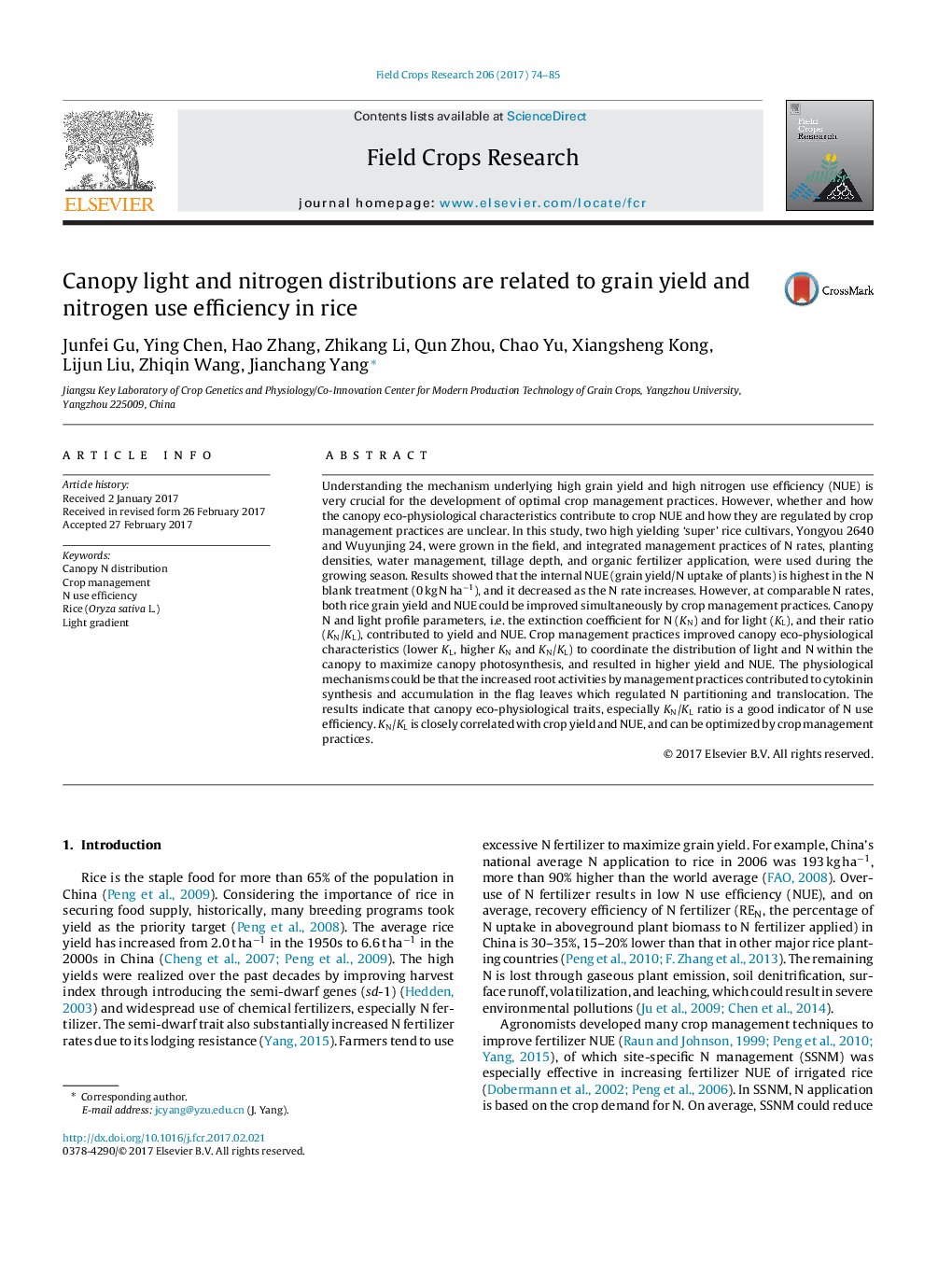| Article ID | Journal | Published Year | Pages | File Type |
|---|---|---|---|---|
| 5761527 | Field Crops Research | 2017 | 12 Pages |
Abstract
Understanding the mechanism underlying high grain yield and high nitrogen use efficiency (NUE) is very crucial for the development of optimal crop management practices. However, whether and how the canopy eco-physiological characteristics contribute to crop NUE and how they are regulated by crop management practices are unclear. In this study, two high yielding 'super' rice cultivars, Yongyou 2640 and Wuyunjing 24, were grown in the field, and integrated management practices of N rates, planting densities, water management, tillage depth, and organic fertilizer application, were used during the growing season. Results showed that the internal NUE (grain yield/N uptake of plants) is highest in the N blank treatment (0 kg N haâ1), and it decreased as the N rate increases. However, at comparable N rates, both rice grain yield and NUE could be improved simultaneously by crop management practices. Canopy N and light profile parameters, i.e. the extinction coefficient for N (KN) and for light (KL), and their ratio (KN/KL), contributed to yield and NUE. Crop management practices improved canopy eco-physiological characteristics (lower KL, higher KN and KN/KL) to coordinate the distribution of light and N within the canopy to maximize canopy photosynthesis, and resulted in higher yield and NUE. The physiological mechanisms could be that the increased root activities by management practices contributed to cytokinin synthesis and accumulation in the flag leaves which regulated N partitioning and translocation. The results indicate that canopy eco-physiological traits, especially KN/KL ratio is a good indicator of N use efficiency. KN/KL is closely correlated with crop yield and NUE, and can be optimized by crop management practices.
Related Topics
Life Sciences
Agricultural and Biological Sciences
Agronomy and Crop Science
Authors
Junfei Gu, Ying Chen, Hao Zhang, Zhikang Li, Qun Zhou, Chao Yu, Xiangsheng Kong, Lijun Liu, Zhiqin Wang, Jianchang Yang,
